Applying the social model of disability to UX design
21st September 2016

People for Research launched the ‘Make The Web Accessible’ campaign earlier this year. More recently, we teamed up with WECIL, a Bristol-based organisation that works with disabled people on a daily basis to raise awareness about digital inclusion. This blog is by WECIL’s Steph More O’Ferrall.
WECIL stands for the West of England Centre for Inclusive Living and our focus is on providing services that enable disabled people to be more fully included in every aspect of daily life. Our approach is based on the social model of disability, which states that it is not a person’s impairment that disables them, but the environmental, organisational and attitudinal barriers they face that prevent them from participating fully in society.
A classic example of this is a wheelchair user who would like to go to a concert, but finds there are steps into the venue. If a ramp is provided, the person is able to enter the building and go to the concert along with everyone else; so it’s the lack of a ramp that’s disabling them, not the fact they’re in a wheelchair.
The barriers faced by disabled people are what prevent them participating fully in society. We want to break down those barriers.
💭 “A solution to overcome digital disability? Great user experience (UX) design.”
An inaccessible website or app is a similar barrier to participation. It’s a recruitment website, for example, that doesn’t support the use of screen readers that means a visually impaired person is unable to fill in an online application form, rather than their visual impairment.
Taking the social model of disability approach means that our work is all about working together with disabled people to come up with creative and practical solutions to remove the barriers they encounter.
One part of this is tackling digital exclusion and we run a UK Online Centre, where people can learn about how to get on the web and develop their digital skills. We are a disability specialist champion centre, our computer suite is based in an accessible building and we have assistive technology such as screenreaders and specialist mice and keyboards available. Overcoming the physical barriers to using a computer and getting online is, of course, only one element of being able to access the web.
WECIL user testing a special prototype
We have also been working with the Tinder Foundation to make suggestions on the accessibility of their Learn My Way website. Their newly redesigned site has just been launched and it was great to be involved in user testing the prototype.
The team at the Tinder Foundation are already very switched on about accessibility, but one of our deaf members of staff was able to highlight, for example, the fact that British Sign Language (BSL), rather than English, is the first language of many deaf people. This means they have lower literacy levels, which can make reading the text on a website difficult. This emphasises the need for plain English and the Tinder team also said they would look into the possibility of including some videos in BSL on the website.
Creating videos in BSL is something we ourselves would like to do for our own recently re-launched website, as a way of providing the deaf community with accessible information about our services. During the process of building the new site, we ran user experience testing sessions with our clients and also our staff and volunteer team and we are keen, now it’s live, to keep the dialogue open and continue to look at ways to improve the site’s accessibility.
We are a disabled people’s user-led organisation, which means that at least 75% of our trustees and many of our staff are disabled people and all our work is based on the principles of co-production. This is why it is great to find that including users directly in the development of services and the design of online tools is gradually becoming a more widely accepted approach and one that is recognised to be more effective.
Improving accessibility together
We were delighted then when People for Research asked us to become a partner in their #MaketheWebAccessible campaign, as they are experts in UX and really value the contribution that disabled people can make. Improving accessibility starts with finding out what the barriers to access are. Listening to the unique perspective of individual disabled people is very powerful in terms of understanding those barriers and figuring out the best way to overcome them.
For disabled people, taking part in user testing not only brings in some extra income, but is also an opportunity to contribute their views and participate in making the web more accessible for everyone.
The idea that sharing feedback could help to improve a new website or app is a great incentive, as many disabled people will have experienced how hard browsing the web or shopping online can be when sites haven’t been designed with accessibility in mind. Even the simplest details make a difference.
Speaking to a colleague about this yesterday, he said that one of the biggest factors in accessibility for him is if the content on a site is laid out in a logical order and that order remains consistent across every page. He uses assistive technology to read online, so a logical layout saves him a huge amount of time and frustration. It also, of course, makes the site more user-friendly for everyone. We hope that accessibility will increasingly be seen not as an added extra, but as a key part of creating a more equal and more usable web experience for all.
If you would like to find out more about our in-house participant recruitment service for user testing or market research get in touch on 0117 921 0008 or info@peopleforresearch.co.uk.
At People for Research, we recruit participants for UX and usability testing and market research. We work with award winning UX agencies across the UK and partner up with a number of end clients who are leading the way with in-house user experience and insight.


